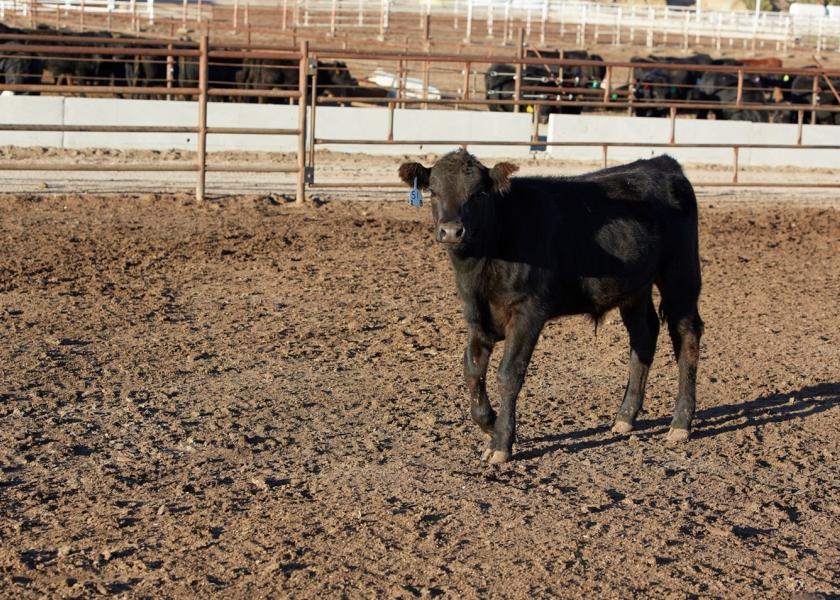How to Manage Young Calves in the Feedlot

Young, early weaned calves can be resilient, but if too many environmental stressors hit at once, feedlot operators and backgrounders could be faced with an uphill battle nursing them back to health.
That’s why evaluating the overall management, vaccination and nutritional programs for those young calves is critical, especially this year with drought conditions across the northern Plains, according to Dr. Jess Hinrichs, beef technical services veterinarian for Zoetis.
Examine facility arrangement
“Calves are going to be coming in (to feedyards) younger, have lighter weights, and we need to do a little better job of handling them and acclimating them to the pens,” Hinrichs explained.
He added that young calves don’t always fit the management or facility design that works with larger cattle, so it is important to be aware of pen conditions.
Consider feed bunks and water sources, for example.
Hinrichs said smaller calves might be unable to reach the outside of larger fence line feeders and could easily crawl through bunks.
Water sources become a challenge for young calves, too, so providing additional tanks can help encourage drinking.
Evaluate vaccination protocol
Vaccination strategies for feedlots and backgrounding situations should also be assessed, according to Hinrichs.
Young calves typically receive immunizations at branding time, and Hinrichs said that should benefit their health.
“We’re going to still reap some of the benefits from that round of vaccine,” he added. “Calves are also going to still be carrying some of those maternal antibodies and that’s going to work to our advantage when we look at bringing the cattle in to the feedyard.”
Still, Hinrichs said changing the vaccination protocol on those calves is important because they simply are younger and lack the opportunity to be immunized prior to shipping.
Implementing a gentle approach that uses a low stress vaccination program in younger calves can add to the animals’ overall health, he said.
“We should consider paring down initial vaccinations to reduce stress in this class of calves,” Hinrichs explained. “We may have to repeat vaccinations that we wouldn’t normally do in a feedlot or stocker scenario, but that also gives us the opportunity to break up those vaccines a little bit, too, and not overwhelm the immune system of the calve with multiple antigens upfront.”
Monitor nutrition needs
With less available forage because of dry pasture conditions, young calves entering the feedlot could be carrying less body condition than normal, Hinrichs noted.
That said, he advises feedlot operators and backgrounders to address the nutrition needs of young calves by determining any deficiencies those animals might have on arrival.
“Feed will do a lot for these really young, stressed calves,” Hinrichs explained. “We’ve just got to make sure that we can put them in an environment where they’re taken care of and ensure that they’re coming to the bunk and eating.”
He added that driving consumption can play a key role in creating a successful situation when young calves are involved.
Young calves that come into large facilities and are not properly acclimated to them can be significantly challenged. That’s why Hinrichs said providing ample bunk space is critical to young calves in the feedlot.
“The whole group may go to the bunk, but if enough room is not available for them to eat, some might not be aggressive enough to eat.”
A successful feedlot experience for young calves begins with proper management, and Hinrichs said arming them with the proper navigation from the start is key.
“We’ve got to pay attention to them,” he said. “The nice thing about young calves is they’re probably more resilient than we give them credit for. But we can’t let them fall behind.”







